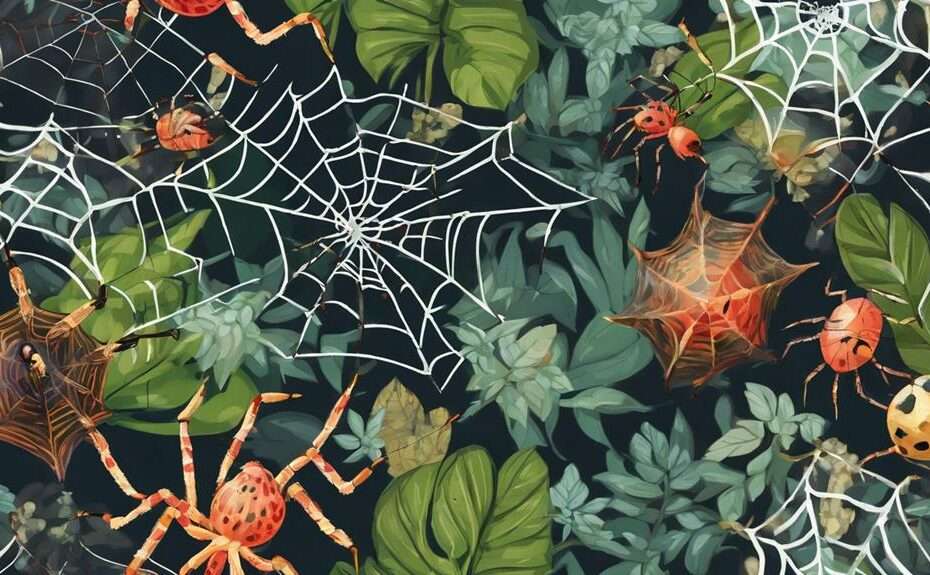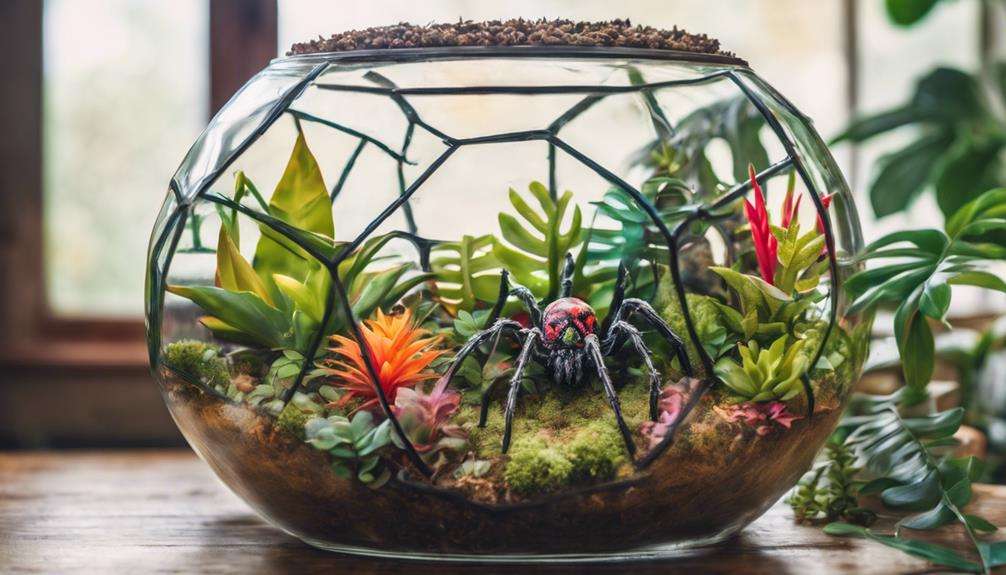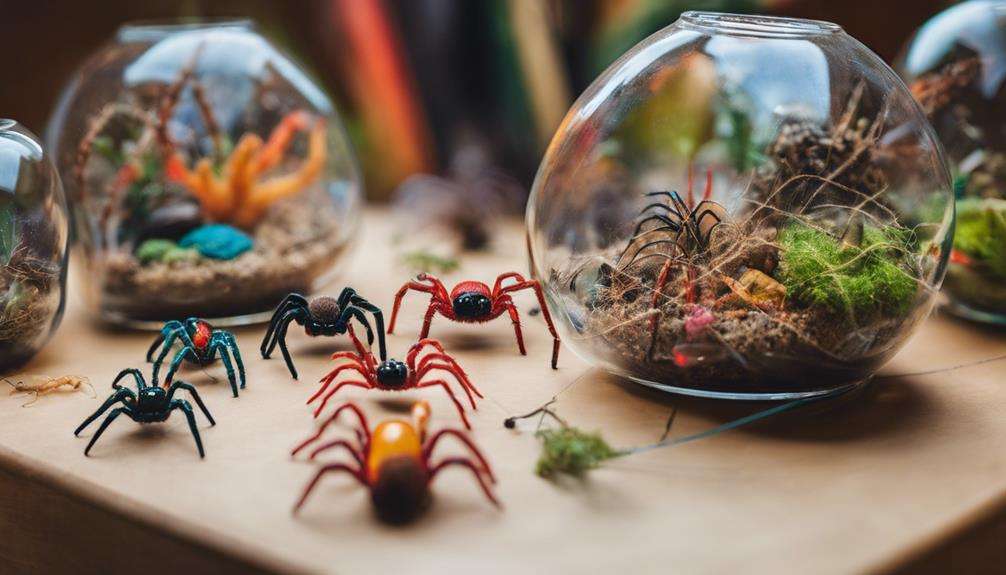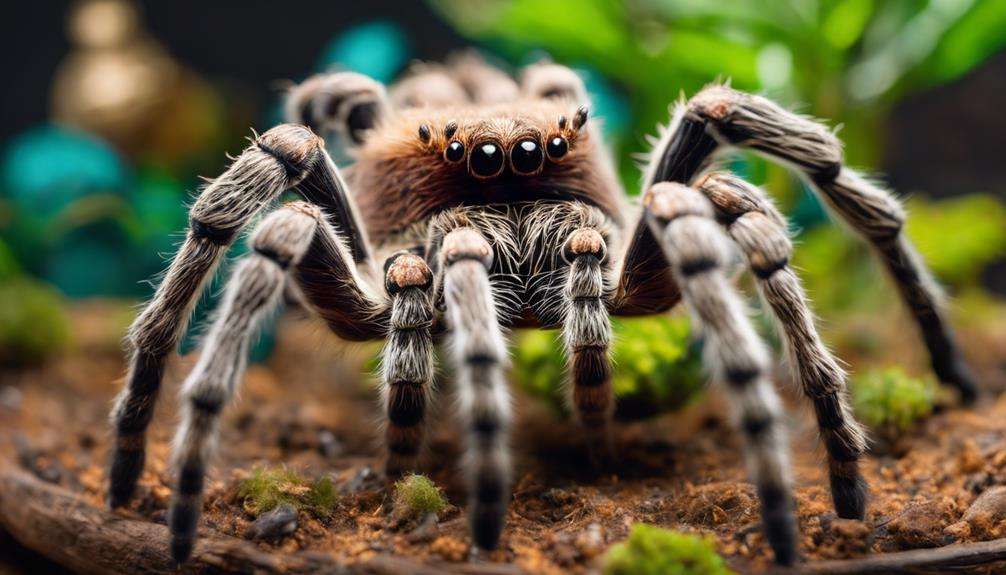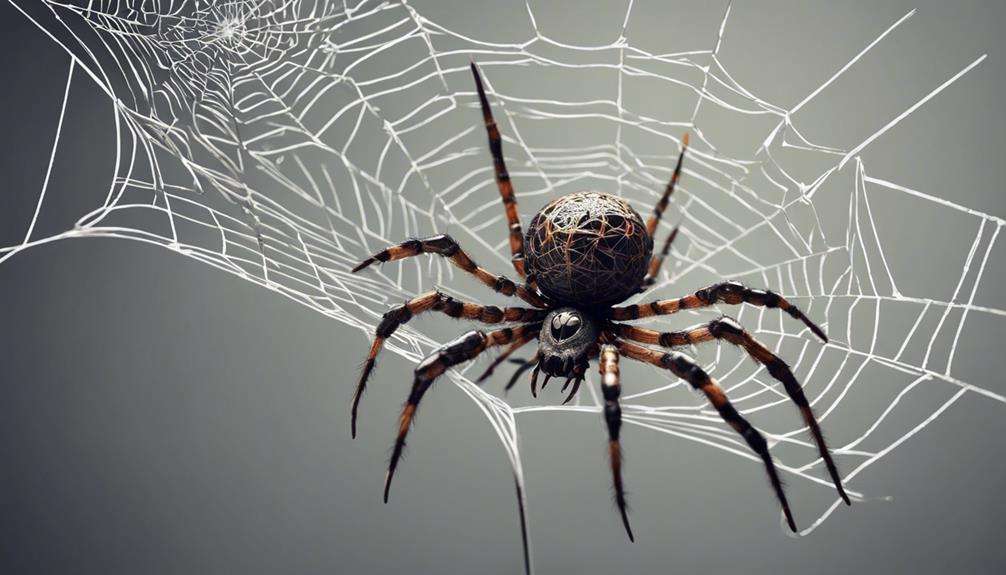When considering pets, dogs and cats may come to mind first, but have you ever thought of adding a touch of intrigue to your collection with rare and fascinating spider species?
These exotic arachnids not only captivate with their striking appearances but also exhibit intriguing behaviors that make them stand out among traditional pets.
From the vibrant Goliath Birdeater Spider to the elegant Peacock Tarantula, each spider offers a unique allure that collectors find irresistible.
Key Takeaways
- Goliath Birdeater Spider: Large, exotic, and sought after by collectors.
- Peacock Tarantula: Endangered, beautiful, and delicate handling required.
- Mexican Red Knee Tarantula: Docile, unique coloration, and long-lived pet choice.
- Brazilian Salmon Pink Birdeater: Solitary, large, and yearly molting in captivity.
Goliath Birdeater Spider
The Goliath Birdeater Spider, with its impressive leg span of up to 11 inches, is a formidable arachnid species found in the rainforests of South America. These giant spiders aren't your typical pet spider due to their size and unique characteristics. Goliath Birdeaters are known for their preference to inhabit burrows rather than spin webs, unlike many other spider species. They create burrows with silk-lined walls and a characteristic funnel-shaped entrance, which aids in catching prey. Despite their name, these spiders don't primarily feed on birds but rather insects, small rodents, and other invertebrates.
Keeping a Goliath Birdeater as a pet spider requires specific conditions to mimic their natural habitat. Providing a spacious enclosure with plenty of substrate for burrowing is essential for their well-being. Additionally, ensuring a warm and humid environment is vital for their survival. While these spiders may not be the best choice for everyone, they're fascinating creatures for collectors interested in unique arachnids.
Peacock Tarantula
With its mesmerizing metallic blue hues and intricate patterns, the Peacock Tarantula stands out as a visually stunning and highly sought-after arachnid species. This rare tarantula, also known as the Gooty Sapphire Ornamental, hails from a small region in India and is currently facing critical endangerment due to habitat destruction. The Peacock Tarantula is an arboreal species, displaying excellent climbing abilities and a preference for elevated spaces like trees.
When it comes to breeding habits, the Peacock Tarantula follows typical tarantula reproduction patterns, with the female being notably larger than the male. Conservation efforts are essential for this species, as protecting its natural habitat is vital to prevent further decline in the wild population. Territorial behavior is observed in the Peacock Tarantula, especially amongst mature individuals who may display aggression towards others encroaching on their space. Despite its beauty, it's important to handle this tarantula with care due to its potent venom.
Mexican Red Knee Tarantula
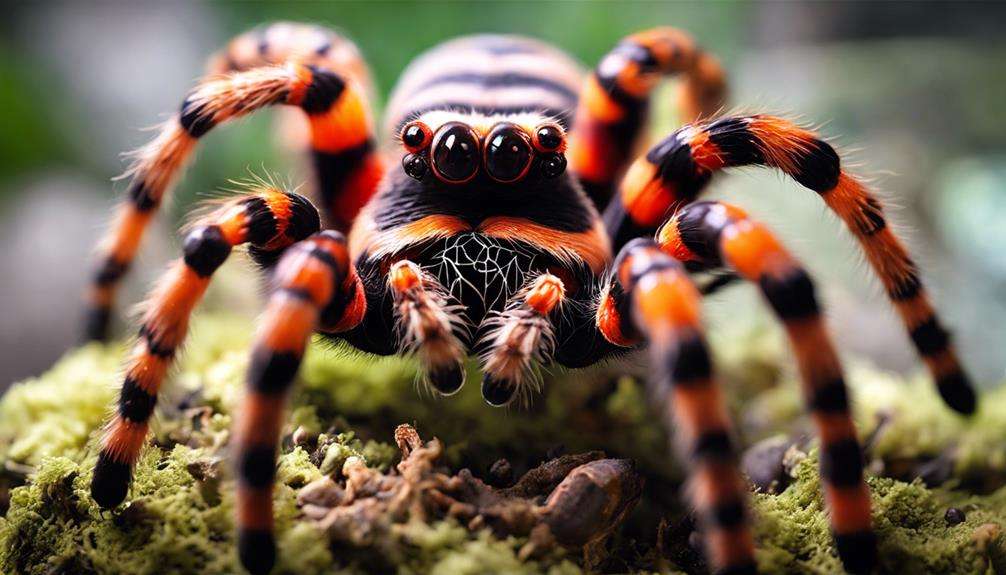
Characterized by its iconic black coloration adorned with vibrant red-orange stripes on its knees, the Mexican Red Knee Tarantula, scientifically known as Brachypelma smithi, is a beloved species among enthusiasts. These tarantulas are docile and mild-mannered, making them ideal for novice keepers. Mexican Red Knee Tarantulas are medium-sized, with females growing up to 6 inches in leg span, while males are smaller. In captivity, females of this species can live for an important 30 years.
When it comes to the tarantula molting process, Mexican Red Knees shed their exoskeleton to grow, an important and fascinating aspect of their life cycle. It's necessary to provide a suitable habitat to support this process. These tarantulas are native to the scrublands and deserts of Mexico, making a dry and warm environment important for their well-being.
As for their feeding habits, they're carnivorous creatures that consume a diet of insects such as crickets and mealworms. Providing a varied diet is important to thus their nutritional needs are met.
Brazilian Salmon Pink Birdeater
Originating from Brazil, the Brazilian Salmon Pink Birdeater, scientifically known as Lasiodora parahybana, stands out as one of the largest tarantula species, boasting an impressive leg span of up to 10 inches.
When it comes to breeding habits, these tarantulas are known for their solitary nature, with the female often consuming the male after mating. The molting process is essential for their growth, as they shed their exoskeleton to accommodate their increasing size. Brazilian Salmon Pink Birdeaters typically molt around once a year, requiring a humid environment to facilitate the process successfully.
In their natural habitat, these tarantulas dwell in the tropical forests of Brazil, where they create burrows to serve as their homes. These burrows provide them with protection and a suitable environment for hunting prey.
Understanding these aspects of the Brazilian Salmon Pink Birdeater's biology is vital for providing them with proper care in captivity.
Regal Jumping Spider
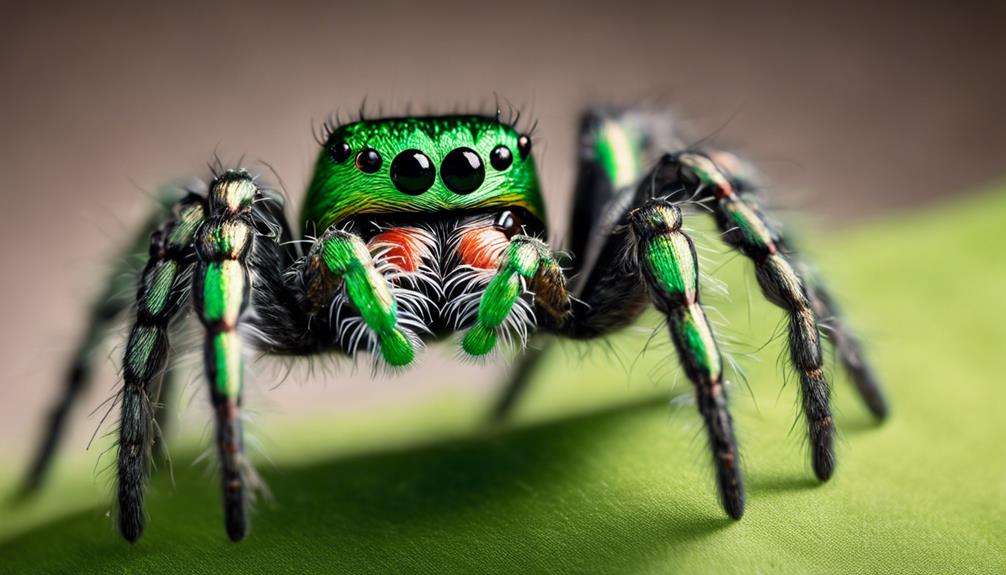
The Regal Jumping Spider, scientifically known as Phidippus regius, boasts enchanting iridescent green chelicerae that distinguish it from other spider species.
These active hunters rely on their exceptional eyesight to stalk and capture prey with precision and agility.
Observers find the Regal Jumping Spider's curious and fearless demeanor intriguing, often exhibiting bold approaches towards onlookers.
Regal Jumping Spider Features
With its striking black and white coloration and iridescent green chelicerae, the Regal Jumping Spider, scientifically known as Phidippus regius, stands out in the world of arachnids. These spiders exhibit colorful markings that make them visually appealing to collectors. Known for their exceptional hunting techniques, Regal Jumping Spiders use their impressive jumping abilities to catch prey, mainly insects.
In captivity, they display curious and interactive behaviors, making them popular among enthusiasts. Their captive interactions are fascinating to observe, as they're relatively easy to care for in small enclosures with proper ventilation. Despite their small size, Regal Jumping Spiders possess a bold and fearless demeanor, adding to their allure as intriguing pets for those interested in arachnids.
Care Tips for Regal Jumping Spider
Exhibiting a striking black and white coloration complemented by iridescent green chelicerae, caring for the Regal Jumping Spider (Phidippus regius) requires attention to specific details to guarantee their well-being.
When it comes to feeding, offer small insects such as crickets and fruit flies to meet their dietary needs. Make sure a well-ventilated enclosure with hiding spots for comfort. Maintaining humidity levels through misting or a water dish is important.
Understanding their molting process is essential; provide a quiet environment during this time. While they're agile, gentle handling is advised to prevent injuries.
Regal Jumping Spiders exhibit interesting breeding behaviors, and their lifespan ranges from one to three years in captivity.
Unique Behaviors to Watch
Observing the Majestic Jumping Spider (Phidippus regius) reveals its remarkable agility and precision in hunting, enchanting those who witness its unique behaviors. These spiders are skilled hunters, using intricate hunting techniques and stealthy prey stalking before pouncing with remarkable accuracy.
Their excellent vision, equipped with four pairs of eyes, aids in tracking and capturing prey effectively. During courtship, males showcase elaborate dances as part of their intricate courtship and mating rituals to attract females.
Despite their small size, Majestic Jumping Spiders display bold and curious behavior, fearlessly exploring their surroundings. Their combination of hunting prowess, complex mating rituals, and inquisitive nature makes them mesmerizing creatures to observe in their natural habitat.
Venezuelan Sun Tiger Tarantula
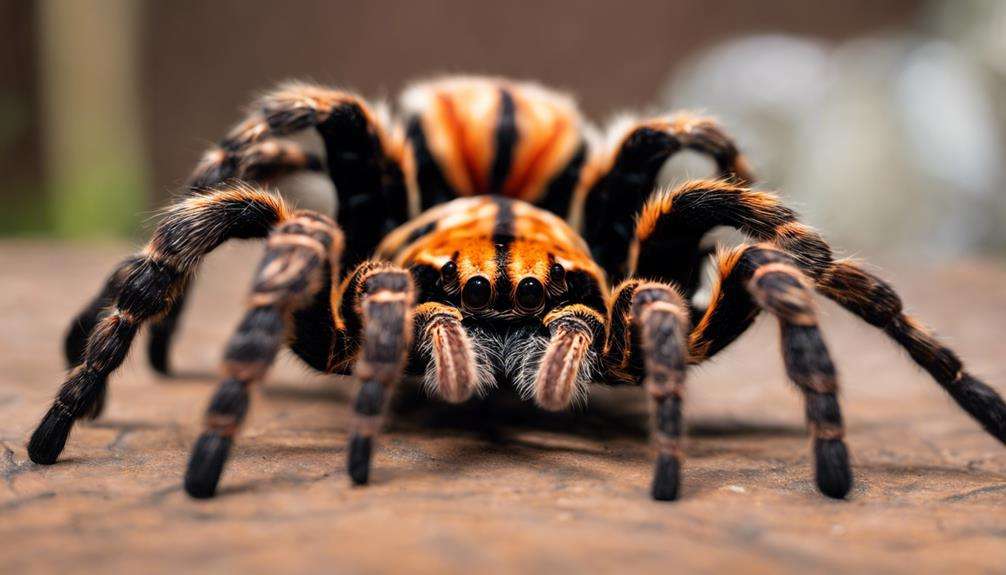
The vibrant coloration and agile nature of the Venezuelan Sun Tiger Tarantula make it a captivating species for collectors and enthusiasts alike. Known scientifically as Psalmopoeus irminia, this striking tarantula displays vibrant orange and black hues, adding to its allure.
Native to Venezuela, this species is highly prized by collectors for its beauty and rarity. With a leg span reaching around 5 inches, the Venezuelan Sun Tiger Tarantula is recognized for its swift and nimble movements, reflecting its arboreal lifestyle in the wild.
In its natural habitat, Psalmopoeus irminia prefers to reside in trees, where it constructs intricate silk retreats for shelter and safety. When caring for this tarantula, it's essential to provide ample vertical space in its enclosure to accommodate its active nature and facilitate the formation of web structures.
Creating a suitable environment that mimics its arboreal habitat is key to promoting the well-being and natural behaviors of the Venezuelan Sun Tiger Tarantula.
Frequently Asked Questions
What Is the Best Spider to Have as a Pet?
For the best spider pet, consider one with unique behaviors like the Brazilian Jewel Tarantula. They require specialized care, such as an arboreal setup. Known for their trapdoor behavior, they can be fascinating due to their intricate personalities.
What Is the Rarest Spider in the World?
The Gooty Sapphire Ornamental Tree Spider (Poecilotheria metallica) from India is considered the rarest spider globally. Its metallic blue coloring and complex patterns make it highly sought after by collectors, yet it faces significant conservation challenges.
What Is the Most Expensive Spider You Can Buy?
In the high-end spider market, exotic arachnid breeds can fetch top dollar, with luxury spider collections featuring species like the Brazilian Jewel Tarantula, Lava Tarantula, Chilean Flame Tarantula, and Colombian Lesserblack Tarantula as some of the most expensive options available.
What Is the Rarest Tarantula?
The rarest tarantula, with unusual colorations, unique behaviors, and exotic habitats, is the Typhochlaena seladonia. This Brazilian Jewel Tarantula captivates collectors with its vibrant hues, intricate web-spinning, and preference for living in remote rainforests.
Conclusion
You have now explored a world of rare and fascinating spider pets for collectors, each with its own unique colors, patterns, and behaviors. From the Goliath Birdeater to the Regal Jumping Spider, these arachnids offer a glimpse into the beauty and complexity of the natural world.
But have you ever wondered what other undiscovered species may be out there waiting to be found? Explore the endless possibilities of the spider kingdom and expand your collection today.
